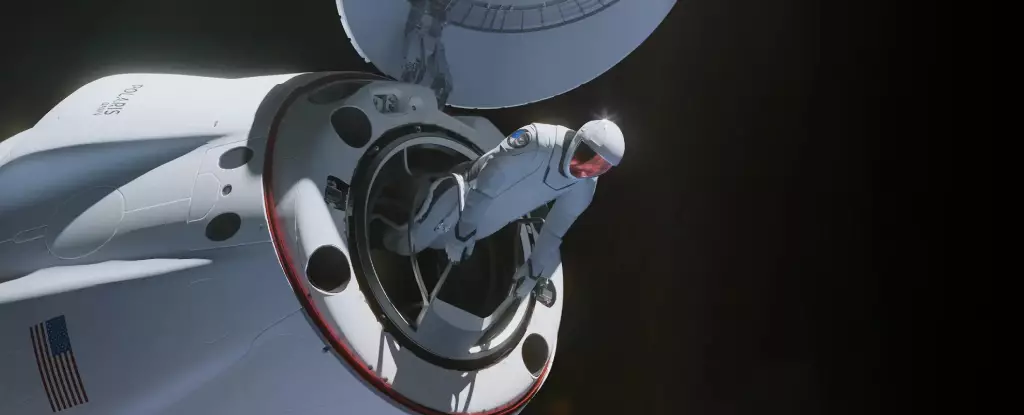SpaceX is preparing to launch an all-civilian crew on an ambitious orbital journey, setting the stage for a groundbreaking spacewalk by private individuals. The upcoming Polaris Dawn mission, spearheaded by billionaire entrepreneur Jared Isaacman, is scheduled for liftoff from NASA’s Kennedy Space Center in Florida at 3:38 am (0738 GMT), with additional launch opportunities available later in the day and on Wednesday. Weather conditions are currently favorable, and SpaceX plans to livestream the event for the public.
The Polaris Dawn mission will see the SpaceX Dragon capsule ascend to an impressive peak altitude of 870 miles (1,400 kilometers) – surpassing the heights reached by any crewed mission in the past fifty years, since the Apollo era. Leading the four-member crew is mission commander Jared Isaacman, who will oversee the mission’s focal point: the first-ever commercial spacewalk featuring the newly designed SpaceX extravehicular activity (EVA) suits. Elon Musk, SpaceX’s founder and CEO, has expressed excitement for the mission, labeling it as “super cool” and pushing the boundaries of space exploration.
Accompanying Isaacman on this historic journey are mission pilot Scott Poteet, a retired US Air Force Lieutenant Colonel, mission specialist Sarah Gillis, a lead space operations engineer at SpaceX, and mission specialist and medical officer Anna Menon, also a lead space operations engineer at SpaceX. The team has undergone rigorous training over the course of two years, including extensive simulation exercises, as well as practical activities such as skydiving, centrifuge training, scuba diving, and reaching the summit of an Ecuadoran volcano.
Unveiling the Polaris Program
Polaris Dawn marks the initial mission under the Polaris program, a collaborative effort between Jared Isaacman and SpaceX aimed at developing and testing new technologies and operations to advance the vision of enabling human space exploration. While the total investment in the project remains undisclosed, reports indicate that Isaacman paid approximately $200 million for the SpaceX Inspiration4 mission in September 2021, which was the first all-civilian orbital mission. The subsequent missions under the Polaris program are expected to further push the boundaries of space travel.
The Polaris Dawn crew will venture to the Van Allen radiation belt on the first day, a region known for its high-energy charged particles that can pose health risks to humans over prolonged exposure. While orbiting nearly three times higher than the International Space Station, the crew will fall short of the record-breaking distance set by the Apollo 13 mission in 1970. The crew will spend time outside the spacecraft on day three, donning advanced EVA spacesuits equipped with cutting-edge features such as heads-up displays, helmet cameras, and enhanced joint mobility systems.
Throughout the mission, the crew will conduct nearly 40 experiments focused on enhancing our understanding of human health during extended spaceflights. These experiments will include testing contact lenses embedded with microelectronics to monitor changes in eye pressure and shape continuously. Additionally, the crew will test laser-based satellite communication with Starlink, SpaceX’s constellation of internet satellites, to enhance space communication speeds.
Looking Towards the Future
After six days in space, Polaris Dawn will conclude with a splashdown off the coast of Florida, where a SpaceX recovery ship will be waiting. The subsequent Polaris missions will continue to utilize the Dragon capsule, while the final mission is anticipated to be the first crewed flight of Starship, SpaceX’s next-generation rocket essential to Elon Musk’s vision of colonizing Mars. The Polaris Dawn mission signifies a new chapter in space exploration, showcasing the potential for civilians to partake in daring orbital expeditions and contribute to advancements in science and technology.

